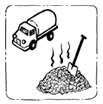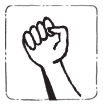Difference between revisions of "Sustainability Portal"
From Akvopedia
| (20 intermediate revisions by 2 users not shown) | |||
| Line 1: | Line 1: | ||
| + | |||
[[File:sust portal icon.png|right|100px|alt=Water4icons.png]] | [[File:sust portal icon.png|right|100px|alt=Water4icons.png]] | ||
[[Image:akvopedia logo.png|right|100px|link=http://akvopedia.org/wiki/Main_Page]] | [[Image:akvopedia logo.png|right|100px|link=http://akvopedia.org/wiki/Main_Page]] | ||
Sustainability is about whether or not WASH services and good hygiene practices continue to work over time. No time limit is set on those continued services and accompanying behaviour changes. In other words, sustainability is about permanent beneficial change in WASH services and hygiene practices. <ref>Richard C Carter, Erik Harvey, Vincent Casey (WaterAid, UK), [http://www.ircwash.org/resources/user-financing-rural-handpump-water-services-paper-presented-irc-symposium-%E2%80%98-pumps-pipes User financing of rural handpump water services]. IRC Symposium 2010. Pumps, Pipes and Promises. IRC.</ref> | Sustainability is about whether or not WASH services and good hygiene practices continue to work over time. No time limit is set on those continued services and accompanying behaviour changes. In other words, sustainability is about permanent beneficial change in WASH services and hygiene practices. <ref>Richard C Carter, Erik Harvey, Vincent Casey (WaterAid, UK), [http://www.ircwash.org/resources/user-financing-rural-handpump-water-services-paper-presented-irc-symposium-%E2%80%98-pumps-pipes User financing of rural handpump water services]. IRC Symposium 2010. Pumps, Pipes and Promises. IRC.</ref> | ||
| + | |||
| + | <div style="display: none"> | ||
| + | = invisible heading (avoids having the table of contents rendered inside the accordion below) = | ||
| + | </div> | ||
Several [[Sustainability Frameworks and Tools|sustainability frameworks]] show how to move from failing systems to reliable and lasting water and sanitation services. | Several [[Sustainability Frameworks and Tools|sustainability frameworks]] show how to move from failing systems to reliable and lasting water and sanitation services. | ||
| Line 9: | Line 14: | ||
{{Accordion | sections= | {{Accordion | sections= | ||
{{Accordion-section | title=History | text= | {{Accordion-section | title=History | text= | ||
| − | Sustainability approaches for the WASH sector began in response to recurring project problems over time, which wasted billions of US dollars invested and resulted in failures such as pump breakdowns or sanitation systems overflowing as toxic pollution into the surrounding environment. With projects abandoned, communities were left, lacking proper fresh water access or hygienic sanitation solutions. This led to the realisation that sustainable service delivery required a sector-wide process of change. <ref>Schouten, T and Moriarty, P. , 2013. [http://www.waterservicesthatlast.org/media/publications/working_paper_3_theory_of_change The Triple-S theory of change. (Triple-S working paper ; 3)]. The Hague, The Netherlands: IRC International Water and Sanitation Centre. </ref> | + | Sustainability approaches for the WASH sector began in response to recurring project problems over time, which wasted billions of US dollars invested and resulted in failures such as pump breakdowns or sanitation systems overflowing as toxic pollution into the surrounding environment. With projects abandoned, communities were left, lacking proper fresh water access or hygienic sanitation solutions. This led to the realisation that sustainable service delivery required a sector-wide process of change.<ref>Schouten, T and Moriarty, P. , 2013. [http://www.waterservicesthatlast.org/media/publications/working_paper_3_theory_of_change The Triple-S theory of change. (Triple-S working paper ; 3)]. The Hague, The Netherlands: IRC International Water and Sanitation Centre.</ref>}}{{Accordion-section | title=F.I.E.T.S Model | text= |
| − | }} | + | This portal uses the basic structure of the [http://www.washalliance.nl/sustainability-portal/ five sustainability elements of FIETS], as developed by the Dutch WASH Alliance, to categorise many different frameworks, approaches and tools of sustainable WASH methods: |
| − | {{Accordion-section | title=F.I.E.T.S Model | text= | ||
| − | This portal uses the basic structure of the [http://www.washalliance.nl/ | ||
*'''<font size="5">F</font>inancial''': continuity of WASH products and services through local financing (free from foreign funds) | *'''<font size="5">F</font>inancial''': continuity of WASH products and services through local financing (free from foreign funds) | ||
| Line 68: | Line 71: | ||
| align="center" valign="top" | {{Icon|file=f-sust icon.png|alt=Revolving Fund|width=85|link=Revolving Fund}}<br/>[[Revolving Fund|Revolving Fund]] | | align="center" valign="top" | {{Icon|file=f-sust icon.png|alt=Revolving Fund|width=85|link=Revolving Fund}}<br/>[[Revolving Fund|Revolving Fund]] | ||
|} | |} | ||
| − | |||
{| style="height:150px; background:#efefef" | {| style="height:150px; background:#efefef" | ||
|- | |- | ||
| align="center" valign="top" | {{Icon|file=f-sust icon.png|alt=Sanitation as a Business|width=85|link=Sanitation as a Business}}<br/>[[Sanitation as a Business|Sanitation as <br>a Business]] | | align="center" valign="top" | {{Icon|file=f-sust icon.png|alt=Sanitation as a Business|width=85|link=Sanitation as a Business}}<br/>[[Sanitation as a Business|Sanitation as <br>a Business]] | ||
| + | |} | ||
| + | {| style="height:150px; background:#efefef" | ||
| + | |- | ||
| + | | align="center" valign="top" | {{Icon|file=f-sust icon.png|alt=Urine Makes Money - Productive sanitation story from China|width=85|link=Urine Makes Money - Productive sanitation story from China}}<br/>[[Urine Makes Money - Productive sanitation story from China|Urine Makes <br>Money - China]] | ||
|} | |} | ||
<!-- Content Column 1 ends here --> | <!-- Content Column 1 ends here --> | ||
| Line 129: | Line 135: | ||
| align="center" valign="top" | {{Icon|file=i-sust icon.png|alt= Planning of Sustainable Sanitation for Cities|width=85|link= Planning of Sustainable Sanitation for Cities}}<br/>[[ Planning of Sustainable Sanitation for Cities| Planning of Sustainable <br>Sanitation for Cities]] | | align="center" valign="top" | {{Icon|file=i-sust icon.png|alt= Planning of Sustainable Sanitation for Cities|width=85|link= Planning of Sustainable Sanitation for Cities}}<br/>[[ Planning of Sustainable Sanitation for Cities| Planning of Sustainable <br>Sanitation for Cities]] | ||
|} | |} | ||
| + | |||
| + | {| style="height:150px" | ||
| + | |- | ||
| + | | align="center" valign="top" | {{Icon|file=i-sust icon.png|alt= SFD - An excreta flow diagram|width=85|link= SFD - An excreta flow diagram}}<br/>[[SFD - An excreta flow diagram| SFD - An excreta <br>flow diagram]] | ||
| + | |} | ||
| + | |||
<!-- Content Column 2 ends here --> | <!-- Content Column 2 ends here --> | ||
| Line 171: | Line 183: | ||
|- | |- | ||
| align="center" valign="top" | {{Icon|file=e-sust icon.png|alt=Ecological Sanitation (EcoSan)|width=85|link=Ecological Sanitation (EcoSan)}}<br/>[[Ecological Sanitation (EcoSan)|Ecological Sanitation <br>(EcoSan)]] | | align="center" valign="top" | {{Icon|file=e-sust icon.png|alt=Ecological Sanitation (EcoSan)|width=85|link=Ecological Sanitation (EcoSan)}}<br/>[[Ecological Sanitation (EcoSan)|Ecological Sanitation <br>(EcoSan)]] | ||
| + | |} | ||
| + | {| style="height:150px; background:#efefef" | ||
| + | |- | ||
| + | | align="center" valign="top" | {{Icon|file=e-sust icon.png|alt=Piloting ECOSAN in a rural school - School sanitation story from Colombia|width=85|link=Piloting ECOSAN in a rural school - School sanitation story from Colombia}}<br/>[[Piloting ECOSAN in a rural school - School sanitation story from Colombia | Piloting ECOSAN<br> in a rural school<br> - Colombia]] | ||
|} | |} | ||
{| style="height:150px; background:#efefef" | {| style="height:150px; background:#efefef" | ||
| Line 185: | Line 201: | ||
|- | |- | ||
| align="center" valign="top" | {{Icon|file=water security icon.png|alt=Water security|width=80|link=Water security}}<br/>[[Water security|Water security]] | | align="center" valign="top" | {{Icon|file=water security icon.png|alt=Water security|width=80|link=Water security}}<br/>[[Water security|Water security]] | ||
| + | |} | ||
| + | |||
| + | {| style="height:150px; background:#efefef" | ||
| + | |- | ||
| + | | align="center" valign="top" | {{Icon|file=e-sust icon.png|alt=Ecological Sanitation for Rural Areas - School sanitation story from Kyrgyzstan|width=80|link=Ecological Sanitation for Rural Areas - School sanitation story from Kyrgyzstan}}<br/>[[Ecological Sanitation for Rural Areas - School sanitation story from Kyrgyzstan | Ecological Sanitation <br>for Rural Areas <br>- Kyrgyzstan]] | ||
|} | |} | ||
| Line 274: | Line 295: | ||
|- | |- | ||
| align="center" valign="top" | {{Icon|file=s-sust icon.png|alt=Public Awareness Raising & Sanitation Marketing |width=85|link=Public Awareness Raising & Sanitation Marketing }}<br/>[[Public Awareness Raising & Sanitation Marketing|Public Awareness<br> Raising & <br>Sanitation Marketing]] | | align="center" valign="top" | {{Icon|file=s-sust icon.png|alt=Public Awareness Raising & Sanitation Marketing |width=85|link=Public Awareness Raising & Sanitation Marketing }}<br/>[[Public Awareness Raising & Sanitation Marketing|Public Awareness<br> Raising & <br>Sanitation Marketing]] | ||
| + | |} | ||
| + | {| style="height:150px; background:#efefef" | ||
| + | |- | ||
| + | | align="center" valign="top" | {{Icon|file=s-sust icon.png|alt=School competition "Toiletten machen Schule" - Awareness raising story from Germany |width=85|link=School competition "Toiletten machen Schule" - Awareness raising story from Germany }}<br/>[[School competition "Toiletten machen Schule" - Awareness raising story from Germany | School sanitation <br>competition - Germany]] | ||
| + | |} | ||
| + | |||
| + | {| style="height:150px; background:#efefef" | ||
| + | |- | ||
| + | | align="center" valign="top" | {{Icon|file=s-sust icon.png|alt=Water and Sanitation Safety Plan program - Awareness raising story from Moldova |width=85|link=Water and Sanitation Safety Plan program - Awareness raising story from Moldova }}<br/>[[Water and Sanitation Safety Plan program - Awareness raising story from Moldova | WASH Safety Plan program - Moldova]] | ||
|} | |} | ||
| Line 284: | Line 314: | ||
|- | |- | ||
| align="center" valign="top" | {{Icon|file=child_schools icon.png|alt=Sustainable Sanitation for Schools |width=80|link=Sustainable Sanitation for Schools }}<br/>[[Sustainable Sanitation for Schools|Sustainable Sanitation <br>for Schools]] | | align="center" valign="top" | {{Icon|file=child_schools icon.png|alt=Sustainable Sanitation for Schools |width=80|link=Sustainable Sanitation for Schools }}<br/>[[Sustainable Sanitation for Schools|Sustainable Sanitation <br>for Schools]] | ||
| + | |} | ||
| + | |||
| + | {| style="height:150px; background:#efefef" | ||
| + | |- | ||
| + | | align="center" valign="top" | {{Icon|file=child_schools icon.png|alt=Putting sanitation first - School sanitation story from India |width=80|link=Putting sanitation first - School sanitation story from India }}<br/>[[Putting sanitation first - School sanitation story from India | Improved sanitation <br>facilities keep girls<br> in school - India]] | ||
| + | |} | ||
| + | |||
| + | {| style="height:150px; background:#efefef" | ||
| + | |- | ||
| + | | align="center" valign="top" | {{Icon|file=child_schools icon.png|alt=Sarar Transformación - School sanitation story from Mexico |width=80|link=Sarar Transformación - School sanitation story from Mexico }}<br/>[[Sarar Transformación - School sanitation story from Mexico | Sarar Transformación <br>sanitation - Mexico]] | ||
| + | |} | ||
| + | |||
| + | {| style="height:150px; background:#efefef" | ||
| + | |- | ||
| + | | align="center" valign="top" | {{Icon|file=child_schools icon.png|alt=Peepoo school program - Kenya |width=80|link=Peepoo school program - Kenya }}<br/>[[Peepoo school program - Kenya|Peepoo school <br>program - Kenya]] | ||
|} | |} | ||
| Line 289: | Line 334: | ||
|- | |- | ||
| align="center" valign="top" | {{Icon|file=s-sust icon.png|alt=Hygiene and Health focused promotion |width=85|link=Hygiene and Health focused promotion }}<br/>[[Hygiene and Health focused promotion|Hygiene and Health <br>focused promotion]] | | align="center" valign="top" | {{Icon|file=s-sust icon.png|alt=Hygiene and Health focused promotion |width=85|link=Hygiene and Health focused promotion }}<br/>[[Hygiene and Health focused promotion|Hygiene and Health <br>focused promotion]] | ||
| + | |} | ||
| + | |||
| + | {| style="height:150px; background:#efefef" | ||
| + | |- | ||
| + | | align="center" valign="top" | {{Icon|file=s-sust icon.png|alt=Promotion of healthy practices - Education project in Bolivia |width=85|link=Promotion of healthy practices - Education project in Bolivia }}<br/>[[Promotion of healthy practices - Education project in Bolivia | Promotion of healthy <br>practices - Bolivia]] | ||
|} | |} | ||
Latest revision as of 07:27, 21 June 2017
Sustainability is about whether or not WASH services and good hygiene practices continue to work over time. No time limit is set on those continued services and accompanying behaviour changes. In other words, sustainability is about permanent beneficial change in WASH services and hygiene practices. 1
Several sustainability frameworks show how to move from failing systems to reliable and lasting water and sanitation services.
History
Sustainability approaches for the WASH sector began in response to recurring project problems over time, which wasted billions of US dollars invested and resulted in failures such as pump breakdowns or sanitation systems overflowing as toxic pollution into the surrounding environment. With projects abandoned, communities were left, lacking proper fresh water access or hygienic sanitation solutions. This led to the realisation that sustainable service delivery required a sector-wide process of change.2
F.I.E.T.S Model
This portal uses the basic structure of the five sustainability elements of FIETS, as developed by the Dutch WASH Alliance, to categorise many different frameworks, approaches and tools of sustainable WASH methods:
WASH FIETS animation
- Financial: continuity of WASH products and services through local financing (free from foreign funds)
- Institutional: sustained and functional local WASH systems with capable institutions, policies and procedures
- Environmental: sustainable management of water and waste flows that is considerate of the natural environment
- Technical: operation & maintenance of hardware, by local people, preserves not depletes (natural) resources
- Social sustainability: demand-driven, inclusive (equity), gender equal, culturally sensitive and needs-based approach to WASH
Field experiences
The following projects are currently utilizing sustainability methods.
 Partnership in WASH services delivery |
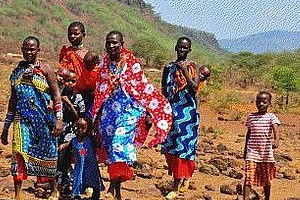 Scaling-up using CLTS in Kenya |
 Scanning and Mapping the WASH Situation |
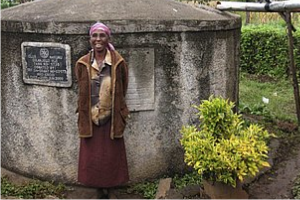 Rainwater Harvesting in Kenya |
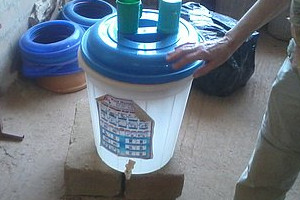 Cost effective means of financing WASH | ||
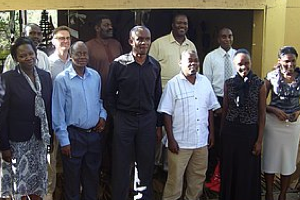 Promoting sustainable access to WASH services |
 Kajiado WASH Programme |
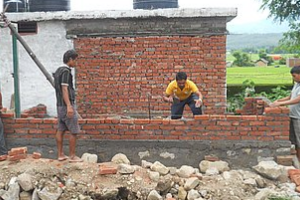 SWASH in Birendranagar, Surkhet |
 Integrated WASH project for Acholi Sub region |
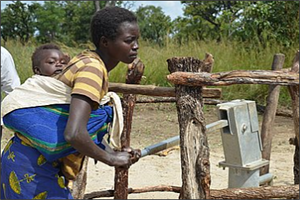 Northern Uganda WASH Alliance Project | ||
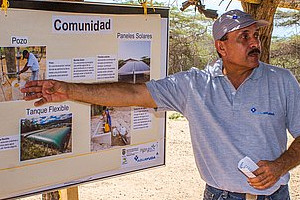 MWA-LAP: Colombia |
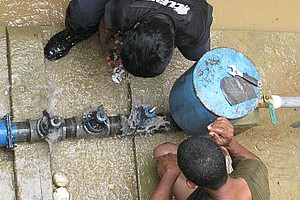 MWA-LAP: Nicaragua |
 WASH services & capacity building Liberia |
Sustainability resources
Sustainability approach - movie
By IRC and Aguaconsult
Links
- 3R Smart Solutions
- IRC - Triple-S - waterservicesthatlast.org
- Dutch Water Alliance - washalliance.nl
- SustainableWASH.org - sustainablewash.org
References
- ↑ Richard C Carter, Erik Harvey, Vincent Casey (WaterAid, UK), User financing of rural handpump water services. IRC Symposium 2010. Pumps, Pipes and Promises. IRC.
- ↑ Schouten, T and Moriarty, P. , 2013. The Triple-S theory of change. (Triple-S working paper ; 3). The Hague, The Netherlands: IRC International Water and Sanitation Centre.
Acknowledgements
- The material in this portal is primarily a collaboration of IRC and Akvo Foundation.
- The FIETS icons were made in collaboration with the Dutch WASH Alliance.
| |
